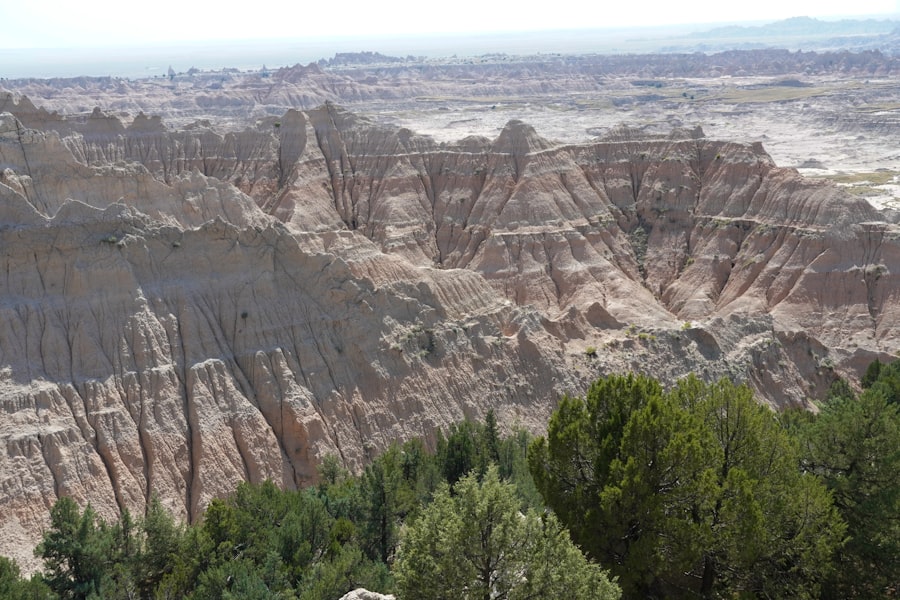Discovering the Enigmatic Beauty of Chocolate Hills
Description
The Chocolate Hills, a geological marvel located in the Bohol province of the Philippines, are a striking natural formation that has captivated visitors and researchers alike. These hills, numbering over 1,200, rise dramatically from the surrounding landscape, each one a conical or dome-shaped structure that varies in height from 30 to 50 meters. The formation of these hills is attributed to a combination of geological processes that took place over millions of years.
Initially, the area was submerged underwater, where marine organisms thrived and deposited limestone sediments. Over time, tectonic activity caused the land to uplift, exposing these limestone formations to the elements. Erosion played a crucial role in shaping the Chocolate Hills into their current form.
Rainwater, wind, and other natural forces gradually wore away the softer materials surrounding the limestone, leaving behind the distinctive mounds we see today. The unique topography is further enhanced by the region’s tropical climate, which contributes to the lush vegetation that covers the hills during the rainy season. This process of erosion and sedimentation is not only fascinating from a geological perspective but also highlights the dynamic nature of Earth’s surface and how it can transform over time.
Key Takeaways
- The Chocolate Hills were formed by the uplift of coral deposits and the action of rainwater and erosion over millions of years.
- According to legend, the Chocolate Hills were formed from the tears of a giant named Arogo who wept over the death of his mortal beloved.
- The breathtaking landscape of the Chocolate Hills offers panoramic views and opportunities for hiking, photography, and nature appreciation.
- The Chocolate Hills are home to a variety of plant and animal species, including the endangered Philippine tarsier and various orchid species.
- Conservation efforts are in place to protect the natural wonder of the Chocolate Hills, including reforestation and sustainable tourism practices.
The Legend Behind the Name
The Legend of the Giants
One popular legend tells the story of two giants who lived in the area. These giants were said to be fierce rivals who engaged in a series of battles that left the landscape scarred. After their conflicts, they eventually reconciled and became friends, but not before leaving behind the hills as a reminder of their tumultuous past.
The Tale of Arogo and Aloya
Another tale speaks of a giant named Arogo who fell in love with a mortal woman named Aloya. When Aloya passed away, Arogo was heartbroken and wept for days. His tears formed the hills, which symbolize his eternal love and sorrow.
The stories surrounding the Chocolate Hills reflect the deep-rooted beliefs and traditions of the people who inhabit this enchanting region.
Exploring the Breathtaking Landscape

Visiting the Chocolate Hills is akin to stepping into a surreal landscape that seems almost otherworldly. The hills are spread across an area of approximately 50 square kilometers, offering panoramic views that are nothing short of breathtaking. The most popular viewpoint is located at the Chocolate Hills Complex in Carmen, where visitors can ascend a viewing platform that provides an unobstructed vista of the undulating hills stretching as far as the eye can see.
The sight is particularly stunning at sunrise or sunset when the changing light casts shadows and highlights across the terrain, enhancing its beauty. For those seeking a more immersive experience, hiking trails wind through the hills, allowing visitors to explore their contours up close. The trails vary in difficulty, catering to both casual walkers and more adventurous trekkers.
As one navigates through this unique landscape, it becomes evident that each hill has its own character, shaped by natural forces and time. The tranquility of the surroundings is often punctuated by the sounds of nature—birds chirping, leaves rustling in the breeze—creating an atmosphere that invites reflection and appreciation for this natural wonder.
Flora and Fauna of the Chocolate Hills
| Flora and Fauna of the Chocolate Hills | Metrics |
|---|---|
| Number of plant species | 1,268 |
| Number of butterfly species | 98 |
| Number of bird species | 147 |
| Number of mammal species | 27 |
| Number of reptile species | 30 |
The biodiversity surrounding the Chocolate Hills is as remarkable as their geological features. The area is home to a variety of plant species that thrive in its tropical climate. Grasses dominate the landscape during the dry season, while during the rainy months, vibrant vegetation flourishes, transforming the hills into a lush green paradise.
Among these plants are several endemic species that contribute to the ecological richness of Bohol. The hills are also dotted with trees such as acacia and mahogany, which provide shade and habitat for various wildlife. The fauna in this region is equally diverse.
Birdwatchers will delight in spotting numerous avian species that inhabit the area, including Philippine tarsiers—one of the smallest primates in the world—and various types of butterflies that flit among the flowers. The Chocolate Hills are also part of a larger ecosystem that supports reptiles and small mammals, making it an important area for conservation efforts. The interplay between flora and fauna creates a vibrant ecosystem that not only enhances the beauty of the landscape but also plays a vital role in maintaining ecological balance.
Conservation Efforts to Preserve the Natural Wonder
Recognizing the significance of the Chocolate Hills as both a natural wonder and a cultural treasure, various conservation efforts have been implemented to protect this unique landscape. The local government has established regulations aimed at minimizing human impact on the environment while promoting sustainable tourism practices. These measures include limiting construction activities in sensitive areas and encouraging responsible visitor behavior to reduce littering and habitat destruction.
Additionally, educational programs have been developed to raise awareness about the importance of preserving this natural heritage among both locals and tourists. Community involvement is crucial in these efforts; local residents are encouraged to participate in conservation initiatives, fostering a sense of ownership and responsibility towards their environment. By engaging with local communities and promoting eco-friendly practices, these conservation efforts aim to ensure that future generations can continue to enjoy and appreciate the beauty of the Chocolate Hills.
Best Times to Visit the Chocolate Hills

Timing your visit to the Chocolate Hills can significantly enhance your experience. The best months to explore this natural wonder are typically from November to May when Bohol experiences its dry season. During this period, visitors can expect clear skies and pleasant temperatures, making it ideal for outdoor activities such as hiking and photography.
The dry season also allows for unobstructed views of the hills without the interference of heavy rainfall or fog. However, visiting during the rainy season from June to October offers its own unique charm. While some trails may become muddy or challenging to navigate, this time brings lush greenery that transforms the landscape into a vibrant oasis.
The hills take on a different character as they are enveloped in mist and clouds, creating an ethereal atmosphere that many find enchanting. Regardless of when you choose to visit, each season presents an opportunity to witness the Chocolate Hills’ beauty from different perspectives.
Activities and Attractions in the Surrounding Area
Beyond exploring the Chocolate Hills themselves, there are numerous activities and attractions in Bohol that complement your visit. One popular nearby destination is the Tarsier Sanctuary, where visitors can observe these adorable primates in their natural habitat. The sanctuary emphasizes conservation and education about these unique creatures while providing an opportunity for close encounters without disturbing their environment.
Another must-see attraction is the Loboc River, where visitors can embark on river cruises that showcase Bohol’s stunning landscapes and rich biodiversity. These cruises often feature traditional Filipino cuisine served on floating restaurants while live music enhances the experience.
Adventure seekers can also indulge in activities like zip-lining or ATV rides through scenic trails that provide thrilling views of both natural landscapes and cultural landmarks. With such a diverse array of attractions available, visitors can easily create an itinerary that combines relaxation with adventure while immersing themselves in Bohol’s rich offerings.
The Cultural Significance of the Chocolate Hills
The Chocolate Hills hold profound cultural significance for the people of Bohol, serving as a symbol of pride and identity for local communities. Beyond their geological uniqueness, these hills are woven into local folklore and traditions, reflecting the deep connection between nature and culture in Filipino society. Festivals celebrating local heritage often incorporate elements inspired by these hills, showcasing traditional music, dance, and crafts that highlight Bohol’s rich cultural tapestry.
Moreover, as a prominent tourist destination, the Chocolate Hills contribute significantly to Bohol’s economy through tourism revenue. This influx supports local businesses and provides employment opportunities for residents, fostering economic growth while encouraging sustainable practices that protect their natural environment. The hills serve not only as a breathtaking landscape but also as a reminder of Bohol’s cultural heritage and its ongoing relationship with nature.
In summary, exploring the Chocolate Hills offers an enriching experience that encompasses geological wonders, vibrant ecosystems, cultural narratives, and community engagement. Each visit provides an opportunity to connect with both nature and local traditions while appreciating one of the Philippines’ most iconic landscapes.
FAQs
What are the Chocolate Hills?
The Chocolate Hills are a geological formation located in the Bohol province of the Philippines. They are made up of around 1,200 to 1,776 conical limestone hills, which are covered in green grass that turns brown during the dry season, giving them a chocolate-like appearance.
How were the Chocolate Hills formed?
The exact formation process of the Chocolate Hills is still a subject of debate among geologists. However, it is widely believed that they are the result of the uplift of coral deposits and the action of rainwater and erosion over millions of years.
What is the significance of the Chocolate Hills?
The Chocolate Hills are a major tourist attraction in the Philippines and are considered a natural wonder. They have been declared the country’s third National Geological Monument and are included in the Tentative List for UNESCO World Heritage Sites.
Can visitors explore the Chocolate Hills?
Yes, visitors can explore the Chocolate Hills by climbing the viewing deck in the town of Carmen, which offers panoramic views of the hills. There are also hiking trails and ATV tours available for those who want to explore the area more closely.
Are there any legends or myths associated with the Chocolate Hills?
One popular legend about the formation of the Chocolate Hills involves two giants who were throwing rocks and sand at each other in a fit of rage, and when they reconciled, they left behind the hills. This legend is a part of the local folklore and adds to the mystique of the Chocolate Hills.





